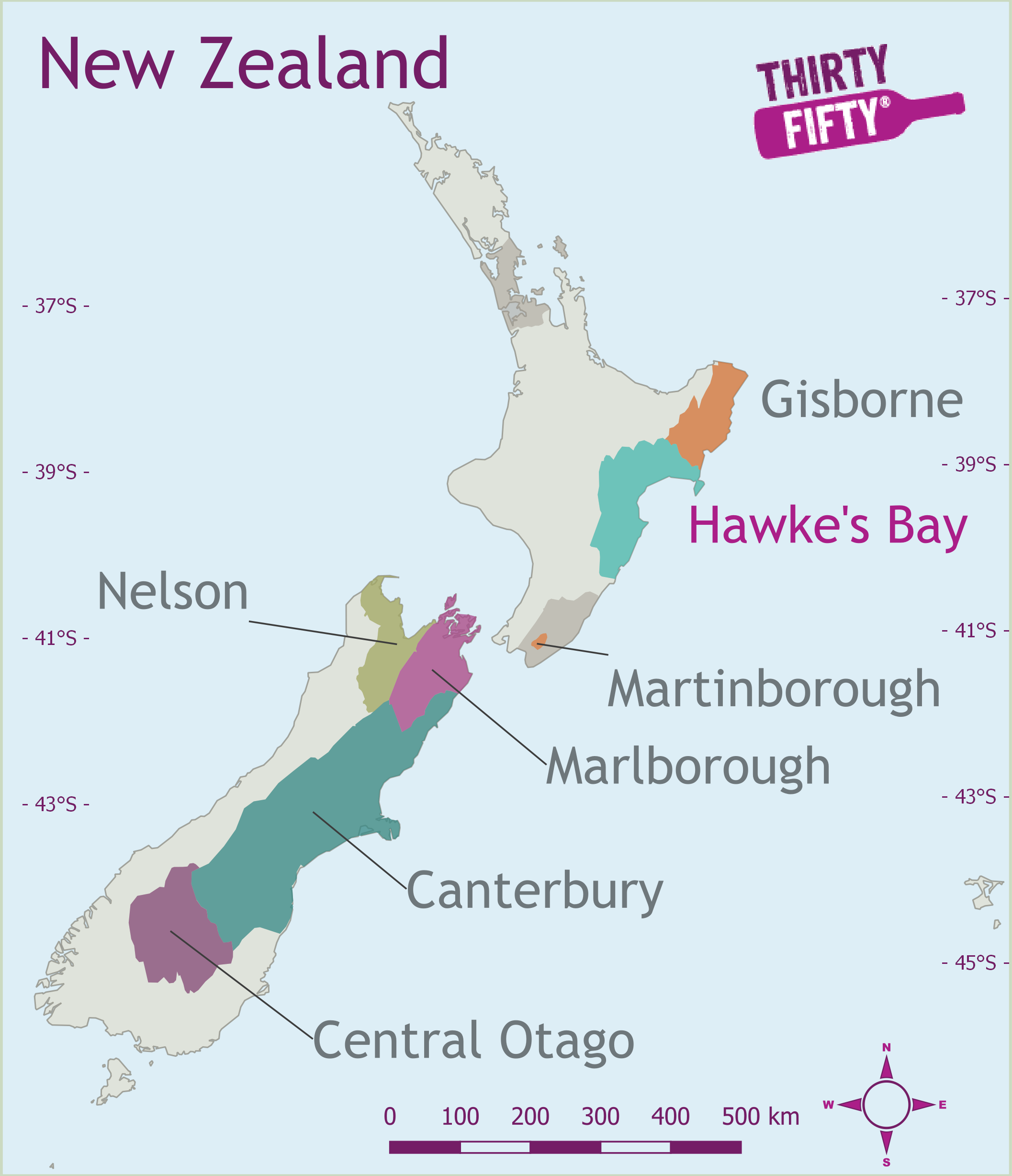Squeeze on Marlborough vineyard space
Rising exports of New Zealand wine fuel demand for vineyard space in Marlborough. Read more »
BOOKINGS: 020 8288 0314
Temperature range 16.5 - 18.5°C
Low diurnal (Day night time temperature differences)
Low Continentality. (Summer winter temperature differences)
Rainfall even throughout the year. Spring rainfall can result in poor flowering and fruit set. While rains at harvest increase the risk of moulds and mildews.
Cabernet Sauvignon is perhaps the most famous red grape. Its home is Bordeaux where it is was created as a cross between Cabernet Franc (red grape) and Sauvignon Blanc (white grape). Since then its popularity has spread and it is grown all around the world. It prefers warmer climates to ripen fully and even in Bordeaux some years it does not ripen. That is why Cabernet Franc is also used in Bordeaux blends as it ripens faster. What makes Cabernet so popular is not its bouquet, which can range from blackcurrants to cigar box, but its structure, typically having both tannins and acidity to create a smooth feeling in the mouth. The structure allows the blending with other grapes, perhaps the most famous pairing is Cabernet Sauvignon and Merlot where the Cabernet provides the structure and the Merlot gives the wine the soft, rounded feel in the mouth. Recently Cabernet has been mixed with Sangiovese (Chianti's grape) to create the SuperTuscans.
Shiraz and Syrah are the same grape. However apart from Australia where it is always called Shiraz, and France where it is Syrah, the rest of the world tends to follow the style of these two. If the wine is ripe and full bodied the wine is often called Shiraz. If the wine has less fruit, more acidity and lower alcohol, it tends to be called Syrah after the wines produced into the North of Rhone. Shiraz/Syrah is produced by itself or can be blended typically in three ways. A small amount of the white grape Viognier can lift the deep flavours of Syrah, this is common in Northern Rhone. In Southern Rhone and recently Australia, blending has been based around adding Grenache and Mourvedre, copying the blending behind Chateauneuf-du-Pape. Even more recently Cabernet Sauvignon and Shiraz/Syrah has been blended in the Southern French wine region of Languedoc, creating big wines with elegance. Hotter climate Shiraz often has aromas of plum, tar and leather and with the right oak treatment even chocolate. Cooler climate Syrah can have a peppery note to the wine.
Climate: Moderate Maritime
Key Grape Varieties: Cabernet Sauvignon, Syrah

Hawkes Bay is located on the east coast of the North Island of New Zealand and produces a healthy 27 per cent of New Zealand’s production (2006). The region is both large and diverse, it is 350km long ans 75 km wide with a range of climates from the very warm Gimblett gravels, a the relativley cool southern Hawkes Bay.
In General the cool maritime climate allows for a diverse range of wine styles, from tropical Sauvignon Blancs and elegant Chardonnays to gutsy Merlot and Cabernet blends. The Cabernet and Merlot blends are the best-known throughout New Zealand and this climate ensures the wines have enough acidity.
Hawkes Bay wine production began in the 1850s when Marist priests, who originally came from Lyon in France, planted the first vines. Today there are over 40 wineries in the region, with production centred around the towns of Napier and Havelock North.
The soils are all alluvial and are wide-ranging, from fertile around the river beds to arid (heavy in volcanic components), clay-based, silt and sand as well as a small amount of limestone. The stony soils of the Gimblett Gravels region (northwest of Hastings) lie on an old river bed. This region is slightly warmer than the coastal areas but one thing the whole of Hawkes Bay shares is the high sunshine hours. Gimblett Gravels has been producing some of the best Syrah, Cabernet, Merlot and Malbec to be found in the region.